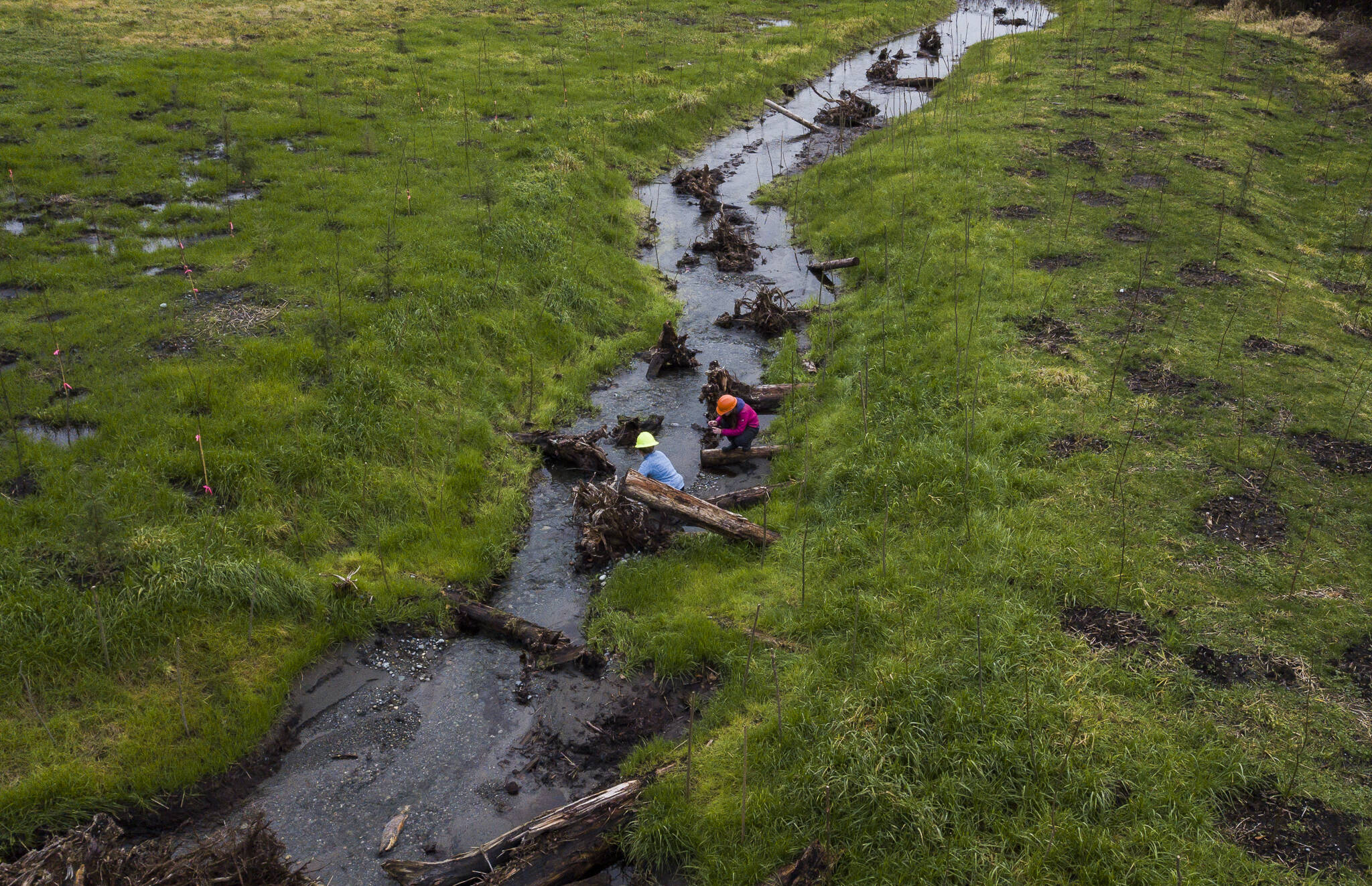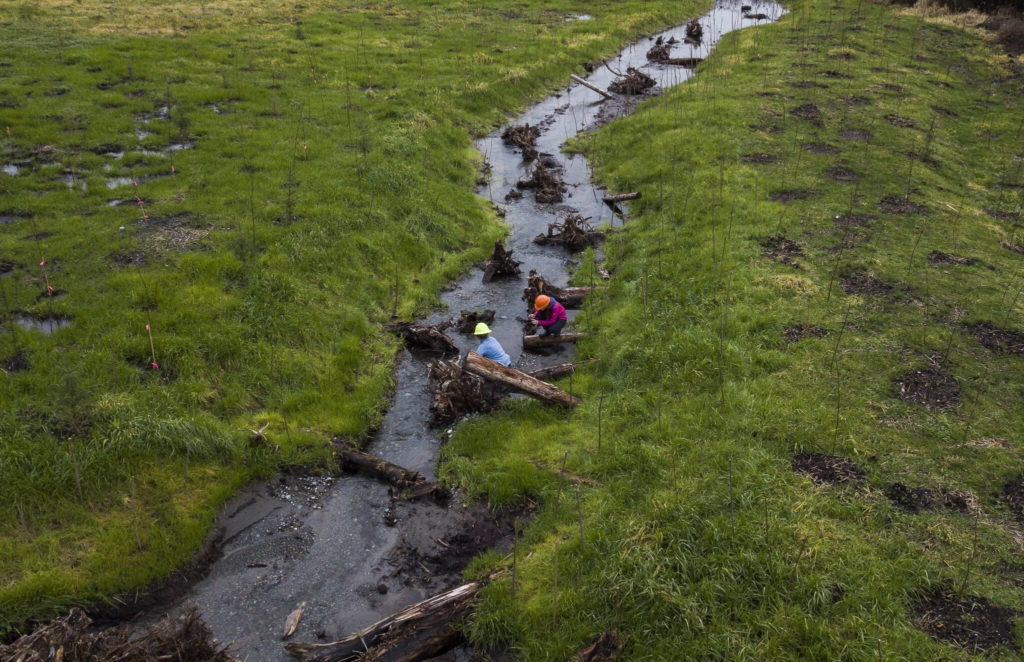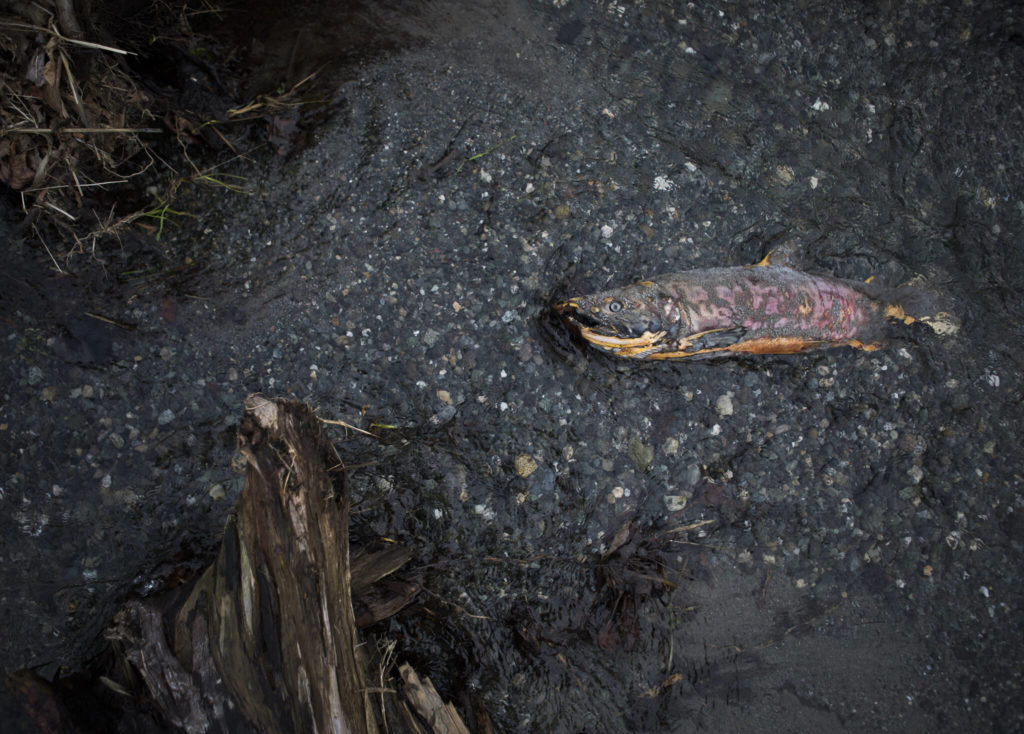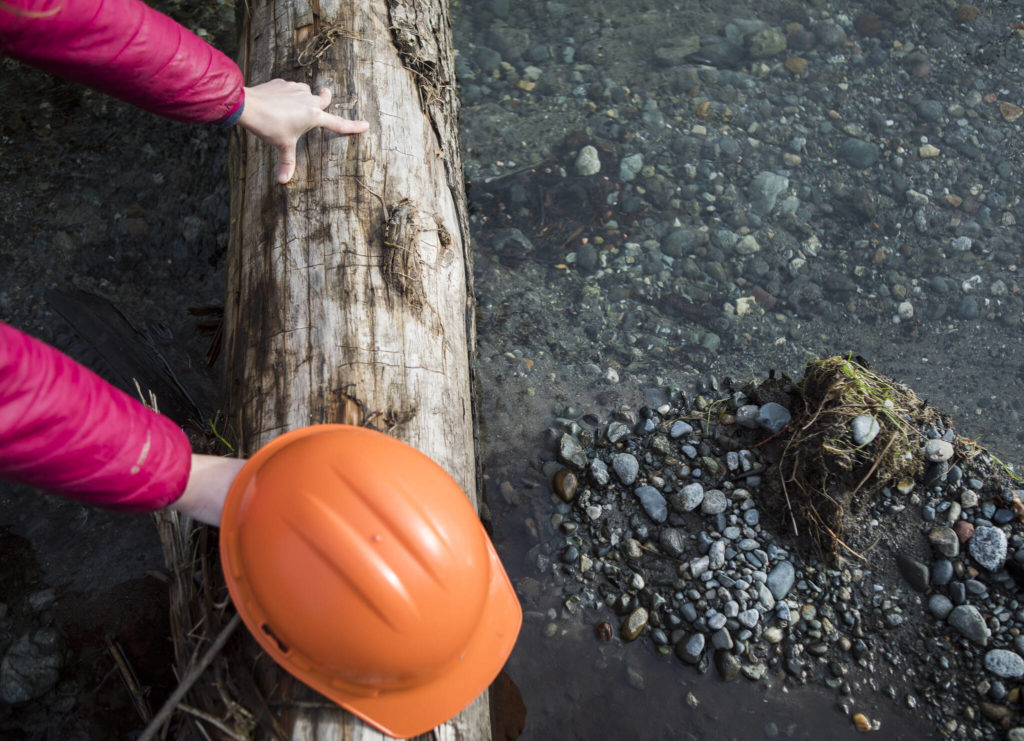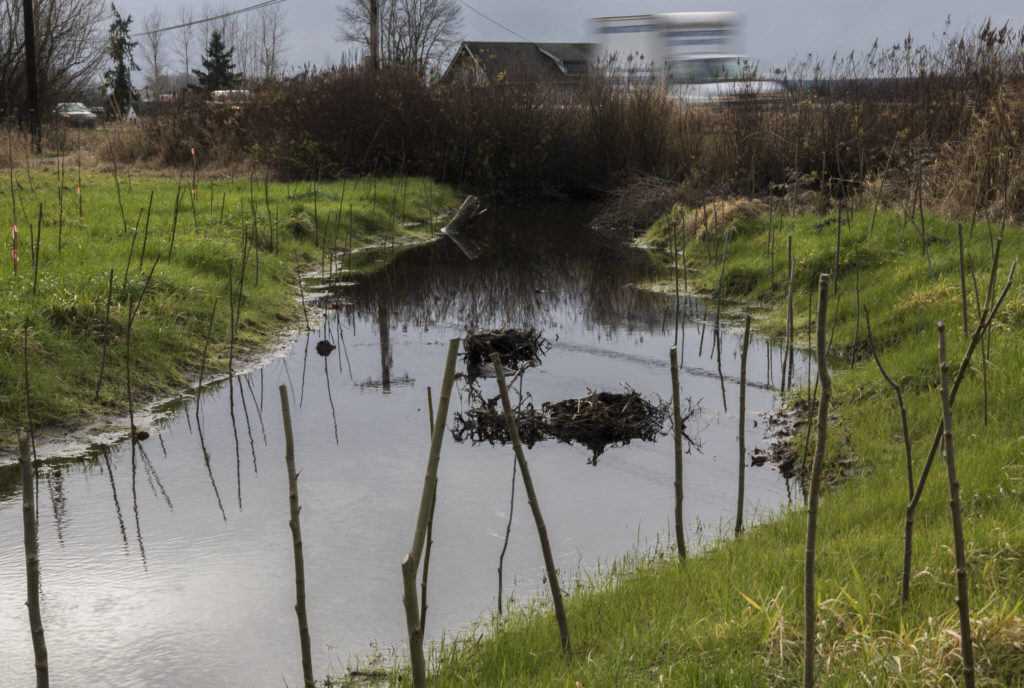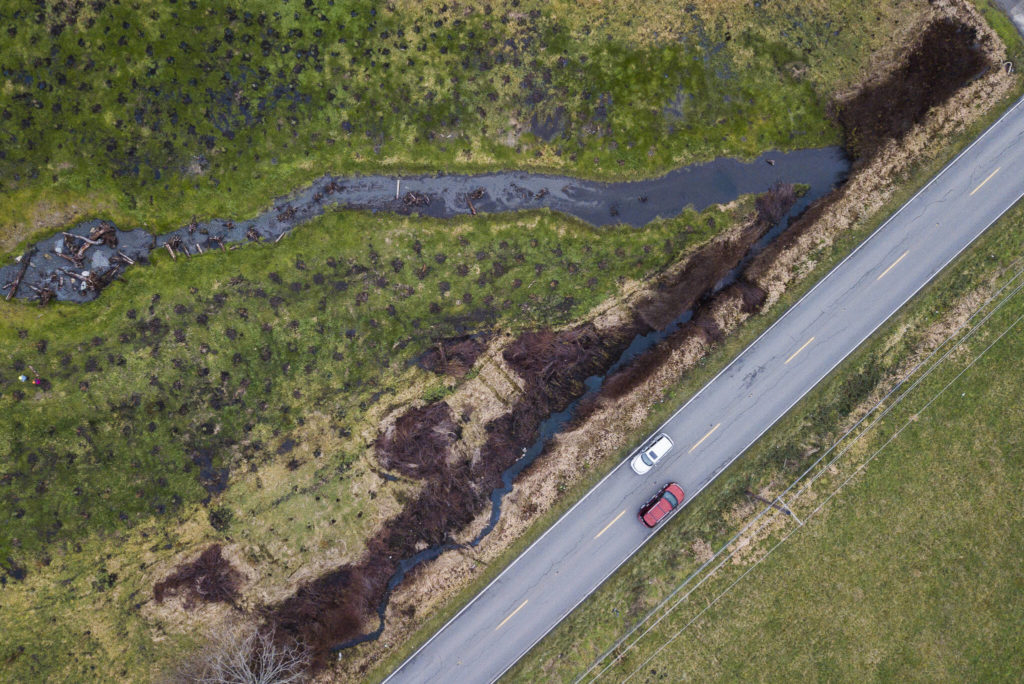ARLINGTON — A lone coho salmon lazily swam its way up a newly built stream on Wednesday, flopping its tail from side to side.
When it found a log blocking the current, it stopped and hung out for a bit.
Fish need to catch their breath, too. This coho has had a long journey, and it’s almost reached its destination.
The 600-foot-long stream, part of the Olaf Strad tributary about a mile south of the Arlington airport, represents just one tiny slice of the journey. It offers respite for salmon and other fish who have had to struggle through civilization’s unforgiving waterways — often narrow straight lines, hemmed in by development, that offer no break in the current.
It must be tiring to be the modern day salmon.
Cohos are the last salmon run of the year. Hundreds, maybe thousands of them, will make their way through the new waterway by Christmas Day. Tom Murdoch, director of the Adopt A Stream Foundation, referred to them as the “acrobats of the salmon world.” They’ll travel as far upstream as they can, guided by their internal compasses. For better or for worse.
The Adopt A Stream Foundation built the stream from scratch in September, on a three-acre plot of land owned by Snohomish County’s Department of Conservation and Natural Resources. The project cost $250,000, with funding from the state departments of Ecology and Fish and Wildlife, as well as the Tulalip Tribes. The property was donated by Donald Gadway, whose house overlooks the new stream.
Before, fish here would swim through roadside ditches along 162nd Avenue NE and 67th Avenue NE, exposed to all the toxic crud that can come off the roads.
The scene in September was a mess of mud and dirt. When workers broke the dams, so to speak, only a trickle spilled out.
With plenty of rain since, the water has carved out a path. The clear stream now winds around logs and stumps and rocks. It splits apart, then braids back together. Closer to the road, there’s a deeper hole where tiny fish fry flit about.
Gravel beds have formed, too. That’s good, said Adopt A Stream ecologist Nicole Vandeputte. She explained salmon like to bury their eggs in the rocks to protect them from predators.
In October, she and Adopt A Stream fish and wildlife technician Emma Atkinson planted “trees,” but they look more like sticks right now, poking straight out of the ground. Vandeputte called them live stakes: branches taken from living trees and kept alive with water. Soon, she said, they’ll sprout branches, and by spring they’ll look more like trees. It feels like a witch’s spell, but it’s backed by science.
Eventually, foliage will take over this property and turn it into a mini-riparian zone, providing shade and food and hiding spots for fish and wildlife.
Murdoch has no illusions that this bit of water alone will save the salmon. He calls it a demonstration project, a vision of what’s possible. He wants to work with other property owners to do similar projects, and make life easier for the fish.
And there’s more work to be done. Over the years, the Olaf Strad tributary has become a series of straight lines ill-suited for salmon. It’s especially bad for fish between Marysville’s Strawberry Fields park and the new stream site, according to maps from the state Department of Fish and Wildlife.
Murdoch would like to see some of those straight lines turn into meandering paths, like on Gadway’s old property.
As for that lone coho, it likely wasn’t long before it found its own spot to spawn. The Olaf Strad tributary goes only a bit further. Then the fish will die, as all salmon do.
On Wednesday, Vandeputte and Atkinson spotted evidence that others had already completed their journey here. Salmon carcasses sat decaying in the water and on the banks. And Atkinson excitedly leaned over a log, pointing at some eggs — a sure sign the cycle of life will continue.
Zachariah Bryan:
Talk to us
> Give us your news tips.
> Send us a letter to the editor.
> More Herald contact information.
